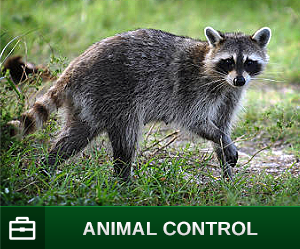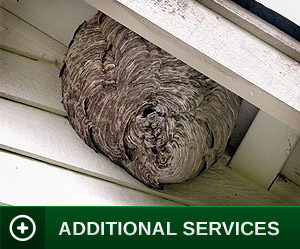There are a number of species of ticks common to New Jersey, each varying in their behavior. The degree to which ticks will travel from their questing locations also varies, however ticks are most likely to be encountered along grass lines, forest lines and animal paths.

American Dog Tick
American Dog Ticks are the most frequently encountered tick and are the most likely tick to be found on both pets and humans. These ticks are very active and will travel from their questing locations into manicured areas. These ticks will readily use humans as a host and capable of transmitting Rocky Mountain spotted fever.
Brown Dog Tick
Brown Dog Ticks are very specific to dogs and are rarely found on humans. This tick is a domestic species and is the only species that will leave its host and infest a home. They are primarily found indoors in cracks and crevices of the home. It is believed that this tick is usually brought into homes by dogs, which have picked them up while visiting infested structures such as veterinarians and kennels etc. Occasionally dogs will pick up Brown Dog Ticks while outside of the home in kennels or areas where they rest.
Lone Star Tick
Lone star ticks are very aggressive ticks and will actively travel from their questing locations into manicured areas. Lone star ticks are commonly found on a wide variety of animals, including humans. These ticks are capable of transmitting Lyme disease, Rocky Mountain spotted fever and Tularemia.
Deer Tick
Deer ticks are the primary tick responsible for the transmission of Lyme disease. These ticks do not travel far from their questing locations and are usually encountered during recreational activities in the woods or in meadows.
Where are ticks found?
You don’t have to go far. Just check out your own backyard! One of the biggest misconceptions about ticks is that you can only get them trudging through deep forests and areas with high vegetation. Studies have shown the precise opposite. Approximately 70% of Lyme disease transmissions are from tick bites in one’s own backyard. As larvae, ticks feed from small mammals like rodents, bats, deer, and other wildlife. Ticks ingest and store infected blood from these reservoir hosts and then progress into their tiny nymph stage. Nymphs inhabit vegetation as low as 4-6 inches, the typical vegetation found in anyone’s own yard. The NJ ticks then transfer the diseased blood from that host to whatever or whoever is unlucky enough to be their next blood meal.
In addition to one’s own backyard, common tick breeding grounds include:
Dense Ground Cover: Areas including pachysandra terminalis, English ivy (Hedera helix), or any similar thick shrubbery. Additionally, this includes landscaped beds where rodents may harbor.
Forest Line: The line where the edge of a forest meets another habitat such as the edge of a forest meeting a lawn, meadow, or street.
Grass Line: The line where an un-maintained grass area meets a manicured area. An un-maintained area is any grassy or weedy area higher than 2″. A manicured area is any well-trimmed and maintained lawn (grass 2″ or less), parking lot, dirt without weeds, or similar ground.
Leaf Litter: The organic debris that rests on a forest floor. In residential lawns, this includes areas of un-raked leaves and or branches and compost piles. Immature nymph ticks (especially deer ticks) often reside in these areas.







